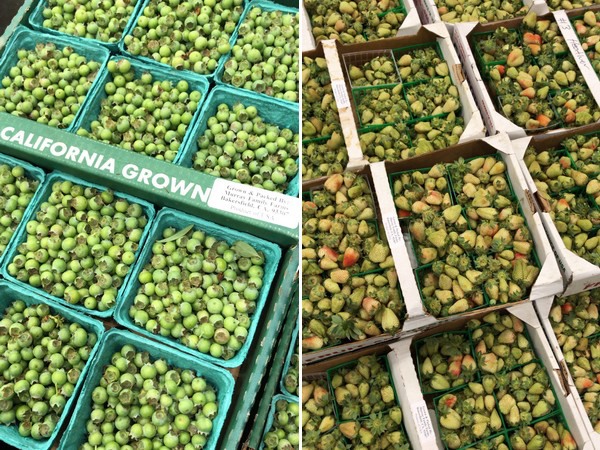You may have heard of a green mango salad or a green papaya curry. But how about poached green almonds or pickled green strawberries?
While the idea of using unripe fruit is hundreds of years old in Middle Eastern or South Asian cuisines, today’s chefs are getting increasingly creative with unripe fruit in dishes that could soon be featured in the many restaurants reopening across the country.
 Rendine says a lot of chefs use green fruit and pickle them for use in desserts.
Rendine says a lot of chefs use green fruit and pickle them for use in desserts.
“The sign of green unripe fruit is really the first sign of spring and chefs really look forward to the California start of springtime,” says Matthew Rendine, director of merchandising at Baldor Specialty Foods in Bronx, NY. Unripe fruit items that today’s chefs are using range widely from those unripe green mangoes or papayas to green bananas and plantains, green strawberries, green almonds, sour plums, unripened dates and wine grapes--even green blueberries. “For example they’ll use green strawberries and pickle them for dishes--a lot of chefs use the green fruit and pickle them for use in desserts or maybe at a seafood restaurant, use green papaya in a ceviche,” says Rendine. “They’re so intrigued by unripe items and they come up with all of these ways to use them--sometimes they teach us about different ways to use them.”
Domestic supplies
Rendine adds that all of the fruit is supplied by domestic growers mostly in California, but also in the case of unripe mangoes and papayas, from other growing regions such as Homestead, FL.
The use is largely restricted to unripe fruit given the vegetable counterpart would be a baby vegetable, a popular food trend on its own. “The reason fruit is green when it’s unripe is chlorophyll--as it ripens, the chlorophyll breaks down and turns into sugar,” says Rendine.
 Left to right: Matthew Rendine with Bakersfield, CA grower Steven Murray of Murray Family Farms.
Left to right: Matthew Rendine with Bakersfield, CA grower Steven Murray of Murray Family Farms.
For growers, it may be an opportunity to move fruit that is perhaps unripened and pruned off the trees or bush, or for towards the end of a growing season when there’s extra fruit that didn’t ripen. “Once their fruit begins ripening, they get more bang for their buck for ripe product. But if growers continue to see a demand for it, they’ll continue to be willing to supply chefs and others with unripe fruit,” says Rendine.
For more information:
Amanda Barry
Baldor Specialty Foods
amanda@maracaibomedia.com
https://www.baldorfood.com
